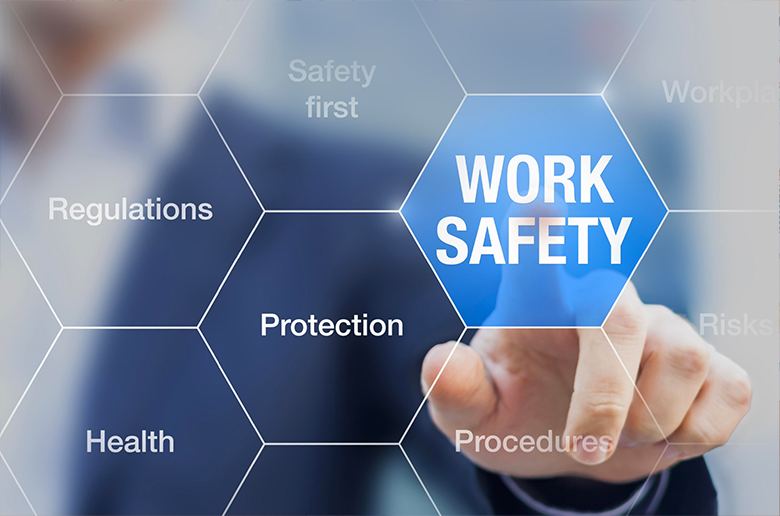Post-Incident Management

Supporting Victims of Violence
Supporting victims of workplace violence requires a comprehensive approach that addresses both their legal rights and their emotional and physical well-being. Here are some best practices for supporting victims in both aspects:
Legal perspective
1. Documentation: Encourage victims to document the incident as soon as possible, including details of what occurred, any injuries sustained, and any witnesses present. This documentation can be essential for legal proceedings and insurance claims.
2. Reporting: Ensure victims are aware of the process for reporting the incident to their employer, relevant authorities, and law enforcement agencies. Prompt reporting is crucial for initiating investigations and establishing a record of the incident.
3. Legal Protections: Inform victims of their legal rights and protections. This can include rights under employment laws, such as anti-discrimination laws, workplace safety regulations, and workers' compensation benefits. Victims should be aware of their rights to a safe working environment and their ability to seek legal remedies if those rights are violated.
4. Legal Support: Encourage victims to seek legal counsel or assistance. Legal professionals with expertise in workplace violence can help victims understand their rights, navigate the legal process, and seek appropriate remedies, such as filing complaints, pursuing civil litigation, or seeking protective orders. Hospitals can support employees by providing the hospital address and phone number for employee protection when filing a formal complaint with law enforcement.
Emotional/Physical Well-being and Recovery Perspective:
1. Immediate Safety: Ensure the immediate safety of the victim by providing a secure environment and addressing any ongoing threats or concerns. This may involve involving security personnel or law enforcement if necessary.
2. Medical Assistance: Arrange for medical evaluations and treatment for any physical injuries sustained during the incident. Offer support in connecting victims with healthcare professionals who specialize in treating trauma-related injuries or mental health concerns.
3. Trauma-Informed Care: Recognize the potential emotional and psychological impact of workplace violence and provide trauma-informed care. Offer access to counseling services, such as therapy or support groups, to help victims cope with the trauma they have experienced.
4. Accommodations and Supportive Measures: Assess the victim's needs and provide appropriate accommodation or supportive measures. This may include adjusting work schedules, relocating workspaces, or providing additional security measures to enhance their sense of safety and well-being.
5. Employee Assistance Programs: Inform victims about available employee assistance programs (EAPs) or other resources that provide support for emotional well-being, counseling, and referrals to community resources.
6. Ongoing Support: Maintain regular communication and check-ins with victims to monitor their progress and provide ongoing support as needed. Encourage a supportive work environment and foster a culture of empathy and understanding among coworkers and supervisors.
Additional Resources:
StrengthenME: https://strengthenme.com/ StrengthenME is Maine’s Department of Health and Human Services program, offering free stress management and resiliency resources to promote the health and well-being of all Mainers. Knowing there is no health without mental health, StrengthenME resources aim to inspire hope and resilience. Services are 100% anonymous, low-barrier, and community-focused.
Maine Violence Prevention Resources: https://www.maine.gov/dhhs/ocfs/support-for-families/violence-prevention-resources
Maine Crime Victims’ Compensation Fund: https://www.maine.gov/ag/crime/victims_compensation/detailed_program_description.shtml
Maine Coalition to End Domestic Violence (MCEDV): https://www.mcedv.org/get-help/
Oregon Workplace Safety Initiative – Workplace Violence in Hospitals: A Toolkit for Prevention and Management: Oregon WPV Toolkit
OSHA Workplace Violence Fact Sheet: https://www.osha.gov/sites/default/files/publications/factsheet-workplace-violence.pdf
Office of Human Resources: Workplace Violence (California): Personnel Operations Manual for Workplace Violence
References:
Arbury, S., Zankowski, D., Lipscomb, J. & Hodgson, M. (2017) Workplace violence
training programs for health care workers: an analysis of program elements. Workplace
Health & Safety. 65(6), 266-272. DOI: 10.1177/2165079916671534.
Arnetz, J.E., Hamblin, L., Ager, J., Aranyos, D., Essenmacher, L., Upfal, M.J. & Luborsky,
M. (2015) Using database reports to reduce workplace violence: perceptions of
hospital stakeholders. Work. 51(1), 51-59. DOI: 10.3233/WOR-141887.
Havaei, F., MacPhee, M., and Lee, S.E. (2018) The effect of violence prevention
strategies on perceptions of workplace safety: A study of medical-surgical and mental
health nurses. Journal of Advanced Nursing. 75, 1657-1666. DOI: 10.1111/jan.13950
McPhaul, K.M., London, M. & Lipscomb, J.A. (2013) A framework for translating
workplace violence intervention research into evidence-based programs. The Online
Journal of Issues in Nursing. 18(1), 1-13. DOI: 10.3912/OJIN.Vol18No01Man04.
Occupational Safety and Health Administration, United States Department of Labor.
(2016). “OSHA 3148-06R 2016: Guidelines for Preventing Workplace Violence for
Healthcare and Social Service Workers.”
https://www.osha.gov/Publications/osha3148.pdf
Odes, R., Hong, O., Harrison, R. & Chapman, S. (2020) Factors associated with physical
injury or police involvement during incidents of workplace violence in hospitals: findings
from the first year of California’s new standard. American Journal of Industrial
Medicine. 1-7. DOI: 10.1002/ajim.23103.
Yosep I, Mardhiyah A, Hendrawati H, Hendrawati S. Interventions for Reducing Negative Impacts of Workplace Violence Among Health Workers: A Scoping Review. J Multidiscip Healthc. 2023 May 22;16:1409-1421. doi: 10.2147/JMDH.S412754. PMID: 37251104; PMCID: PMC10216865.
Maine Violence Prevention Resources: https://www.maine.gov/dhhs/ocfs/support-for-families/violence-prevention-resources
Maine Crime Victims’ Compensation Fund : https://www.maine.gov/ag/crime/victims_compensation/detailed_program_description.shtml
Maine Coalition to End Domestic Violence (MCEDV): https://www.mcedv.org/get-help/
Oregon Workplace Safety Initiative – Workplace Violence in Hospitals: A Toolkit for Prevention and Management: Oregon WPV Toolkit
OSHA Workplace Violence Fact Sheet: https://www.osha.gov/sites/default/files/publications/factsheet-workplace-violence.pdf
Office of Human Resources: Workplace Violence (California): Personnel Operations Manual for Workplace Violence